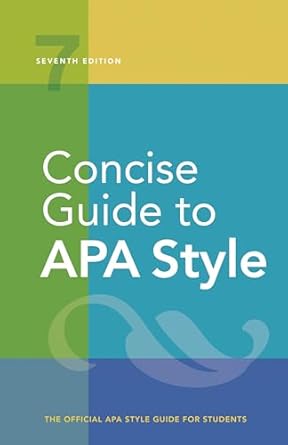[toc]
author bylines affiliations a comprehensive guide
Concise Guide to APA Style: 7th Edition (OFFICIAL)
Page 35 Review
Understanding Author Bylines and Affiliations in Academic Writing
In academic publishing, the author byline and affiliation are crucial elements that provide context and credibility to the research presented.
They identify the authors and their institutional connections, allowing readers to understand the source and potential biases of the work.
This article delves into the nuances of author bylines and affiliations, drawing upon examples and guidelines for proper presentation.
Components of an Author Byline
The author byline typically includes the author’s name, followed by their affiliation.
Let’s examine several examples:
One Author, One Affiliation
“Maggie C.
Leonard
Department of Psychology, George Mason University”
This simple example showcases a single author, Maggie C.
Leonard, affiliated with the Department of Psychology at George Mason University.
The format is straightforward and clear.
One Author, No Institutional Affiliation
“Isabel de Vries
Rochester, New York, United States”
In some cases, an author may not have an institutional affiliation.
This could be due to various reasons, such as being an independent researcher or writer.
In such instances, the author’s location is typically provided.
Two Authors, Shared Affiliation
“Mackenzie J.
Clement and Talia R.
Cummings
College of Nursing, Michigan State University”
When multiple authors share the same affiliation, it is listed below their names, indicating a collaborative effort within the same institution.
Two Authors, Different Affiliations
“Wilhelm T.
Weber’ and Latasha P.
Jackson?
‘ Max Planck Institute for Human Development,
Berlin, Germany
?
College of Education, University of Georgia”
When authors have different affiliations, each affiliation is listed separately, often with superscript numbers linking the author to their respective institution.
This is crucial for clarity and to avoid confusion.
Three or More Authors, Shared Affiliation
“Madina Wahab, DeAndre L.
Washington Jr., and
Julian H.
Lee
School of Public Health, University of California, Berkeley”
For multiple authors with a shared affiliation, the format remains consistent with the two-author case, listing all names followed by the common institution.
Three or More Authors, Different Affiliations
“Savannah C.
St.
John’, Fen-Lei Chang??, and
Carlos O.
Vasquez III”
‘ Educational Testing Service, Princeton,
New Jersey, United States
?
MRC Cognition and Brain Sciences Unit,
Cambridge, England
3 Department of Psychology, University of Cambridge”
Similar to the two-author scenario, multiple authors with different affiliations utilize superscript numbers to clearly link each author to their corresponding institution.
Guidelines for Presenting Author Affiliations
The presentation of author affiliations should adhere to specific guidelines to ensure consistency and clarity:
- Academic Affiliations: “Academic affiliations (e.g., universities, teaching hospitals affiliated with a university) should include the name of any department or division and the name of the institution, separated by a comma.
It is not necessary to include the location of the institution unless the location is part of the institution’s name.”
- Nonacademic Institutional Affiliations: “Nonacademic institutional affiliations (e.g., hospitals or agencies not affiliated with a university, independent laboratories, other organizations) should include the name of any department or division, the name of the institution, and the location of the institution, separated by commas.”
- Location Information: “When providing a location (as for nonacademic institutions), give the city; state, province, or territory as applicable; and country.”
Significance of Author Affiliation
The author affiliation serves several important functions:
- Credibility: It provides readers with information about the author’s background and expertise.
Affiliation with reputable institutions can enhance the credibility of the research.
- Context: It helps readers understand the context in which the research was conducted.
The institutional environment can influence the research questions and methodologies used.
- Contact Information: It allows readers to contact the author for further information or collaboration.
- Attribution: “The affiliation identifies where the author(s) studied (or worked, in the case of professional authors) when the paper was written or the work was conducted, which is usually a university or other institution.”
Conclusion
Properly presenting author bylines and affiliations is essential for academic integrity and clear communication.
By following the guidelines and examples provided, researchers can ensure that their work is accurately attributed and easily understood by the scholarly community.
Paying attention to these details contributes to the overall quality and credibility of academic publications.
Buy full ebook for only $18: https://www.lulu.com/shop/american-psychological-association/concise-guide-to-apa-style-7th-edition-official/ebook/product-rmzpq54.html?page=1&pageSize=4
Author Bylines Affiliations A Comprehensive Guide
Read more: Guided Imagery: Benefits & Research Review

